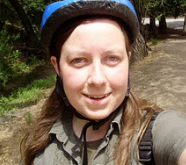Supplies:
*compasses (no less than one for each group of 3-5, depending on the variation)
*pre-made written directions, explained below
*"treasure"
Options
Assuming that the group does not know how to use a compass, the first time this is done will be with guidance from the leader/leaders.
You may choose to either send one knowledgeable leader with each group (up to 6 youth, with a minimum of one compass per 3)
OR
You may take the whole group together (also with one compass per 3 youth), and have the leaders (who may also be unexperienced) disperse among the group to help anyone who needs it. This method is also the simplest, because it only requires one set of directions.
Preparation:
Choose a starting point, and make sure that it is either a spot that can be recognized as a landmark (ie: bush, front door of building, etc), or that you mark it off, such as with red tape. Stand at this location, and scan for a second landmark. (for younger kids, you may only choose direct, "north", "south", "east", "west", or include "northeast", and "southwest". For older kids, you can use degrees (30 degrees, etc) Take your compass, and find the direction of the landmark (instructions on how to use a compass are at the bottom). Then walk, counting each step, to that location. [As you walk, consider the stride that you are taking. If the youth are much smaller than you, try to step with strides that fit their size. This is going to be imperfect. What you walk in 50 steps, may be 60 for some of them. If you make sure that the landmark is prominent, they will figure it out. If you want to be more accurate, send the group shorter distances.] When you get to the second destination, take a piece of paper, and mark it as "Point A". Write down the direction you went, and how many steps it took.
From this location, repeat the process, for points "B", "C", etc. You may plan any number of destinations, with the final destination having a special "treasure". Now go back and place the directions at their respective locations. Hold them down with rocks, so that they don't blow away, but make sure they can still be seen, and place the treasure at the end.
If you are sending out multiple groups, make a different set of directions for each group, marking them as Group A, B, etc. You may wish to use all the same destinations, but have them arrive at these destinations in a different order, and have the tresures be at separate locations, marked with their own group's name.
How to Play
If the whole group goes together, take the lead. Explain how to use the compass, and have them practice by finding and pointing in the direction that you call out. Have any leaders help out with anyone who's having trouble. When it appears that everyone has it figured out, have someone read the directions for "Point A" out loud. When the group points in the right direction, walk with them, the number of steps required, encouraging them to call out with you, the number of each step. Let the group find the next set of directions. Continue in this manner, watching for anyone who is not really participating, and encouraging them by calling them over to help from the front.
For future games, once the group knows how to use a compass accurately, you can send everyone out in groups of 5, with one compass between them. Everyone could have a responsibility. Responsibilities can include reading the directions, finding the direction on the compass, and leading the pacing. They can then switch roles at each destination. You may also tell them that the first group back wins, so that they focus on the game if they may otherwise get distracted.
How To Use A Compass
Hold the compass face up, with the arrow and N, facing away from you. There is a rotating dial in the compass, which will turn as you turn your body, locking your arm so that the compass remains with the N facing away from you. Do not move the compass; only your body. Turn until the red arrow on the dial, lines up with the N. You are now facing North. From this position, you can read the direction of any point in site. Directly to your right is east, or 90 degrees. Behind you is south, or 180 degrees, to your left is west, or 270 degrees. You can also recognize points at 35 degrees, 200 degrees, etc. If you want to see to the south, you may turn the compass and your body, so that the N faces toward you, with the red arrow lining up with the N. Now you will be facing south, directly. Once you are familiar with this you may move the compass and your body more freely, but in order to read the direction accurately, you must keep the red arrow lined up with the N.
Subscribe to:
Post Comments (Atom)

No comments:
Post a Comment